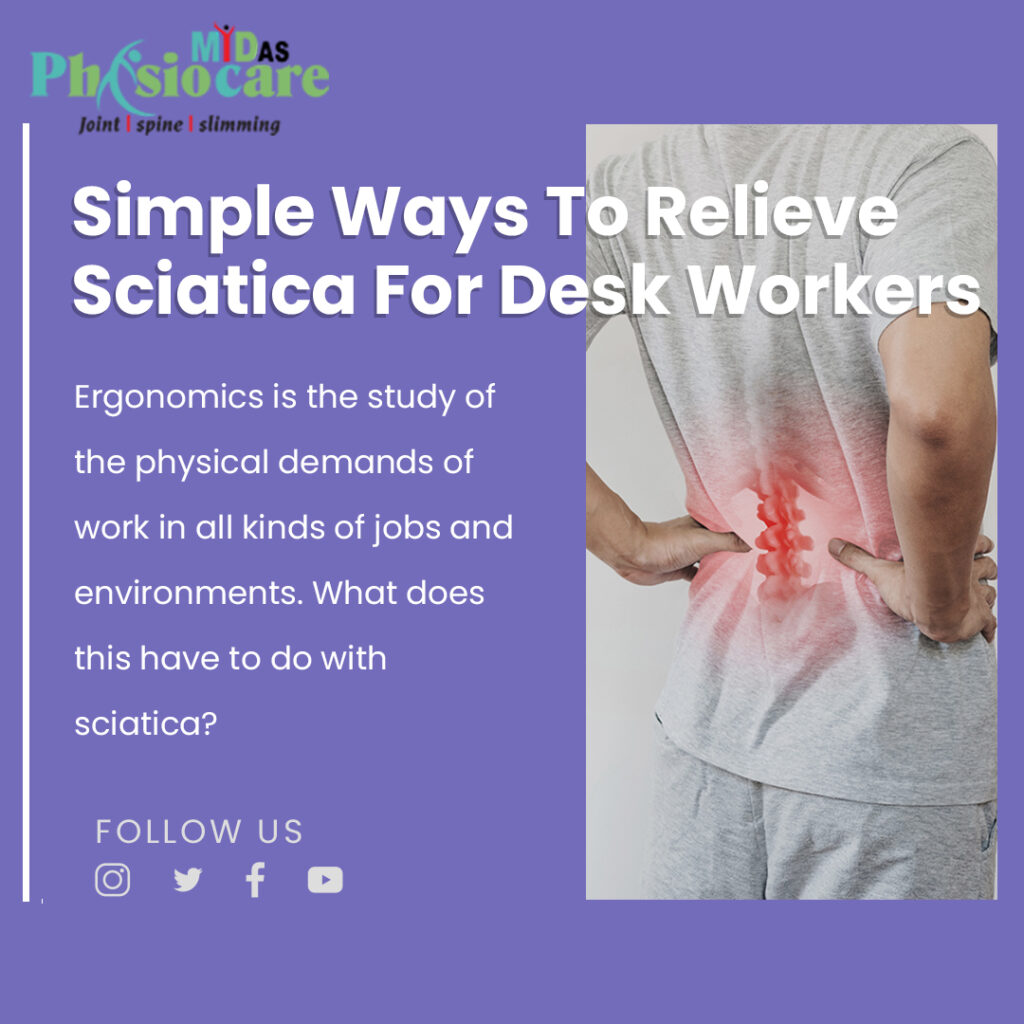Simple ways to relieve Sciatica for Desk Workers
Ergonomics and Sciatica
Ergonomics is the study of the physical demands of work in all kinds of jobs and environments. What does this have to do with sciatica? If you have sciatica, you know low back, buttock, and leg pain can make working painfully difficult. Considering the 5 tips in this blog and applying simple ergonomic principles to everyday activities, such as using a sit-to-stand desk or readjusting your sitting posture, may help get you through the workweek with less pain
5 tips to help you manage sciatica throughout your day.
Tip #1. Take a Seat
Sitting for long periods of time isn’t good for your spine or your sciatica pain. If possible, stand up every 20 minutes and walk a couple of laps around your workspace.
Make sitting more tolerable by choosing a well-designed ergonomic chair. You can also add low back support by placing a lumbar pillow or even a rolled-up towel at the base of your chair.
Other simple tips to reduce sciatica pain while sitting:
- Don’t cross your legs.
- Position feet flat on the floor.
- Keep hips and knees bent at a 45-degree angle.
- If your chair has wheels, use them. Instead of twisting and turning your body, use the chair to move your body as a single unit.
Tip #2. Stay Close to Work
Keep your work close to avoid bending forward. Again, forward bending can aggravate your sciatic nerve. Keep your shoulders relaxed, and rest your elbows and arms on the desk.
Tip #3. Tech Tips for Computer Users
Creating a sciatica-friendly computer workstation is easy. Consider these three tips:
- Position the monitor in front of you at eye level.
- Keep the keyboard and mouse close—you should avoid reaching.
- Choose a chair that provides good back support.
- By incorporating each point, you can avoid leaning (or slumping) forward.
Tip #4. Muscle Smarts with Sciatica
Avoid or limit movements that require muscular force, such as pushing a sofa or picking up a table. Carrying a purse, briefcase, groceries, or luggage can present a challenge. A good tip is to carry an equal amount of weight in each hand. This might be a good time to rid your purse or briefcase of unnecessary items.
Tip #5. At the End of the Day, You’re Mattress Matters
After a long day, you want to get off your feet and rest. However, what you rest your back on can affect how good—or bad—you feel the next day. If your mattress is soft and lumpy, your spine will not be properly supported, leading to muscle fatigue and a poor night’s sleep.
Whether by adding a sit-stand desk to your office environment or simply repositioning your computer monitor, you can create a better work space to relieve your sciatica. However, if you’ve found that these measures—in addition to a little time, ice and heat, and over-the-counter medications—don’t help reduce your low back and leg pain, you should see your doctor. He or she can determine what is causing your sciatica and will develop a treatment plan to get you back on track quickly.

